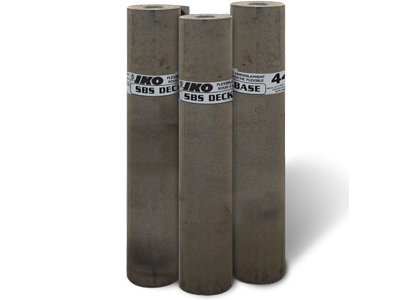Most Common Materials for Commercial Roofing
August 20th, 2023Commercial roofing represents a highly specialized industry wherein roofing experts utilize a variety of construction materials and methods. To believe that all commercial roofs are constructed from the same materials would be incorrect. So then, when it comes to commercial roofing practice, what are some of the most common roofing materials and how would you choose the best materials for your building? Let’s take a closer look at the most common material for commercial roofing and some of the reasons they are selected for various projects.
There are a variety of commercial roofing materials but we will discuss three of the most common including ethylene propylene diene monomer (EPDM), thermoplastic polyolefin (TPO), and polyvinyl chloride (PVC). Depending on factors such as cost, climate, and durability, roofers will recommend materials that most effectively meet your needs.
EPDM roofs are sometimes known as rubber roofs and these materials are commonly selected because they provide great value. Not only are EPDM roofs relatively inexpensive, they are easy to install, lightweight, and relatively easy to maintain. With a lifespan of approximately 20 years, EPDM roofs provide reasonable durability as well. However, EPDM roofs are not the most common choice for those concerned with aesthetics – these roofs essentially look like black, rubber coverings. Since they are black, they also absorb heat meaning cooling costs in the summer can be considerably higher. With respect to effects from weather, EPDM roofs are more susceptible to punctures from events such as hailstorms or falling branches. Still, punctures are easily repaired and major problems can be avoided with appropriate maintenance.
TPO roofs are increasingly popular as a low cost option that reflects heat and reduces cooling costs. These are lightweight roofs that are resistant to corrosion, prevent algae and mildew growth, and feature heat-sealed seams that are more resistant to leaks. Nevertheless, TPO roofs are not fire resistant which means fire retardants need to be integrated into your roofing system.
Finally, PVC roofing features two layers of material reinforced with polyester between the layers. Additives in the layers make PVC roofs resistant to UV damage, and like EPDM and TPO roofs, they are lightweight and easily installed. PVC roofs make an excellent choice for flat or low-slope roofs as they are quite durable and stand up well to moisture, fire, wind, and even chemicals. Installing PVC roofs requires a heat welding process which permanently bonds the roofing sheets and securely attaches seams. On the other hand, PVC roofs are known to shrink which ultimately creates pressure on the seams. Additionally, PVC roofs are relatively expensive and they are not ideal for colder temperatures. PVC repair can be challenging so regular maintenance becomes especially important.
When selecting the roofing material for your commercial building, it is always highly recommended that you work with roofing experts and get their advice. Roofing contractors have the knowledge and experience to fit your roof with the right materials.





